Sold out
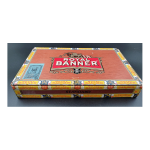
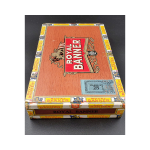
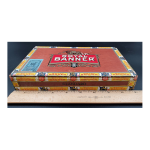
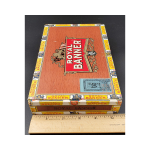
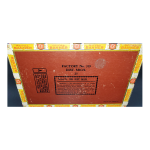
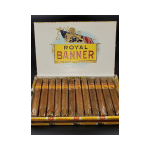

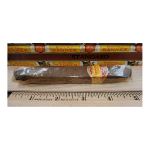
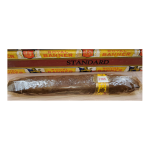









$40.00
Royal Banner was a premium brand manufactered in Detroit. Perfecto in shape they appear to have a Connecticut wrapper. This box was dated as 1945 using the tax stamp "series 115". The method below states to add one year after each series starting in 1932 with series 102. The perforated "11" on the tax stamp is for the eleventh month. Made in November 1945, these were in stores just after World War II ended (August).
FROM MYSTIC STAMP COMPANY: Cigar Revenue Tax Stamps
The first Cigar Revenue stamps were issued in 1846, with the tax rate based on the value of the cigars. A short time later, a flat tax per thousand cigars was introduced. In 1917, cigars were once again taxed according to their value. The cigars were designated Class “A” through “E,” with “E” being the most expensive. Class “F” and “G” were later added to meet the increasing cost of cigars. In 1932, a numbering system began for the Cigar Revenue Stamps, with the first series designated “102” and valid for one year before it was replaced with “Series 103.” The practice continued in subsequent years. As a consequence, “Series 123” Cigar Revenue tax stamps were issued in 1953, and so on. Cigar Revenue tax stamps were discontinued in 1959.
Out of stock
Royal Banner was a premium brand manufactered in Detroit. Perfecto in shape they appear to have a Connecticut wrapper. This box was dated as 1945 using the tax stamp "series 115". The method below states to add one year after each series starting in 1932 with series 102. The perforated "11" on the tax stamp is for the eleventh month. Made in November 1945, these were in stores just after World War II ended (August).
FROM MYSTIC STAMP COMPANY: Cigar Revenue Tax Stamps
The first Cigar Revenue stamps were issued in 1846, with the tax rate based on the value of the cigars. A short time later, a flat tax per thousand cigars was introduced. In 1917, cigars were once again taxed according to their value. The cigars were designated Class “A” through “E,” with “E” being the most expensive. Class “F” and “G” were later added to meet the increasing cost of cigars. In 1932, a numbering system began for the Cigar Revenue Stamps, with the first series designated “102” and valid for one year before it was replaced with “Series 103.” The practice continued in subsequent years. As a consequence, “Series 123” Cigar Revenue tax stamps were issued in 1953, and so on. Cigar Revenue tax stamps were discontinued in 1959.
